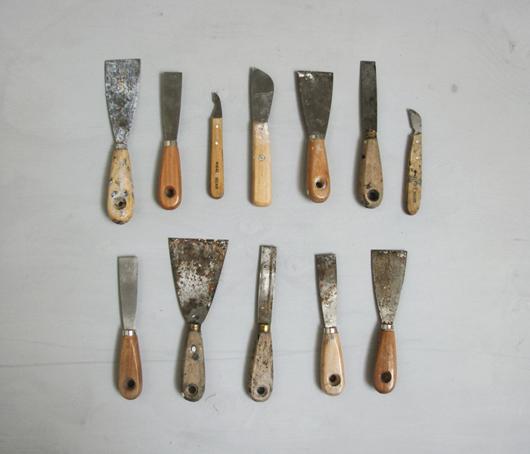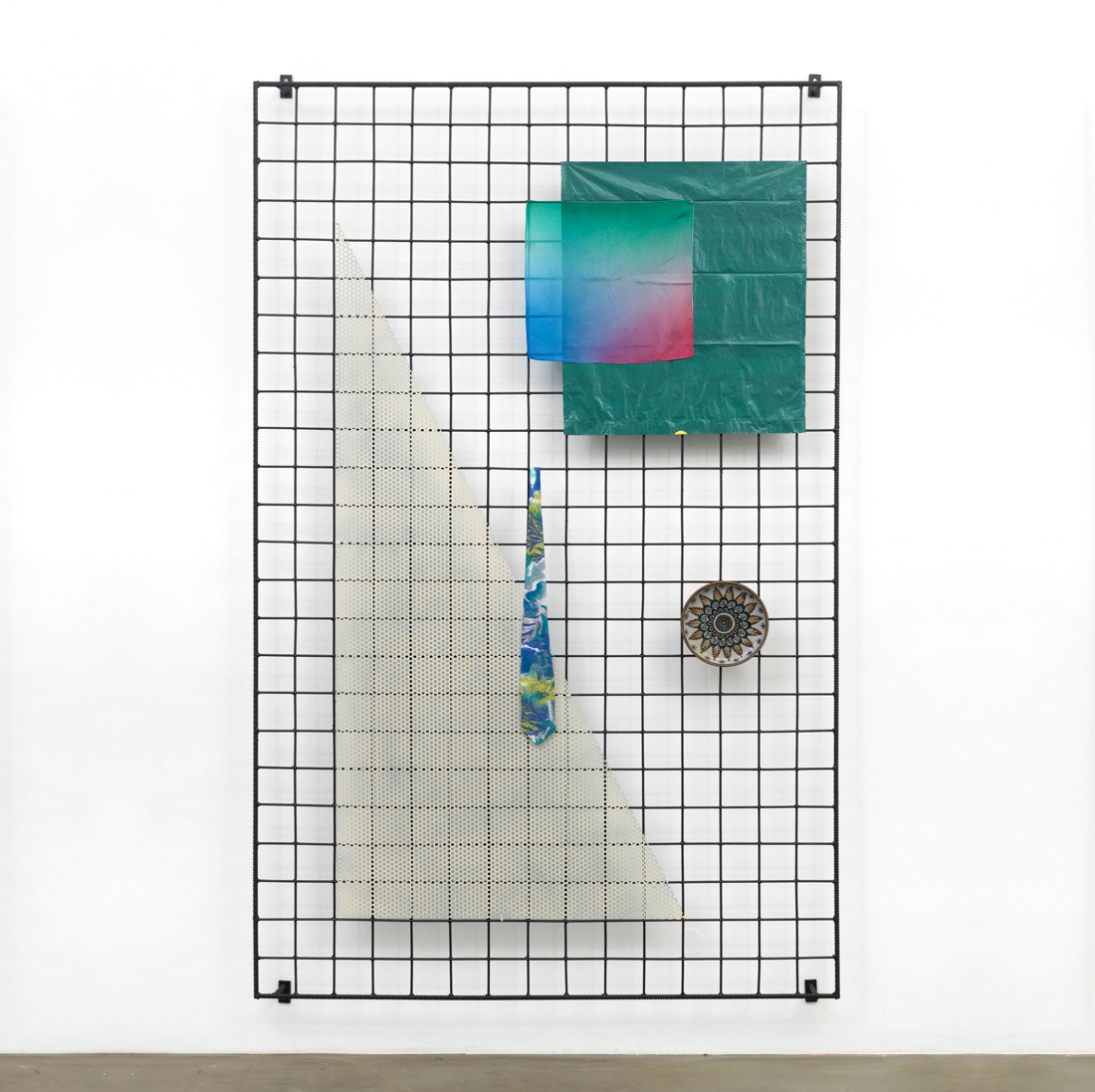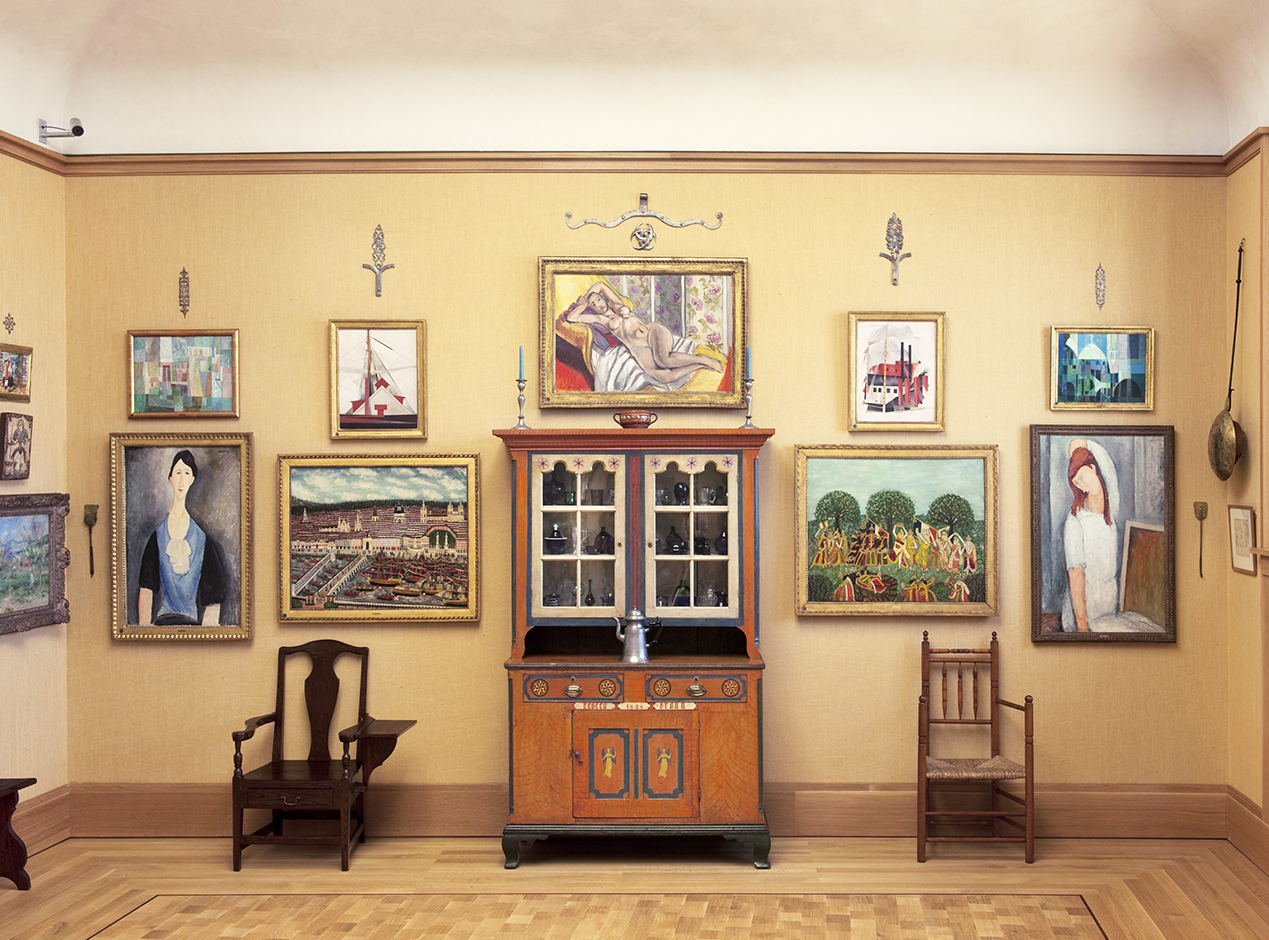
04.08.13
8 Things
The Curator of Philly’s Legendary Barnes Foundation on her Favorite Pieces From the Collection
In 2002, when the Barnes Foundation announced a plan to move from its original location in Merion, Pennsylvania, to nicer, big-time architect–designed digs in Philadelphia, there was a bit of an uproar. How, devotees of the collection wondered, could anything ever replicate the obsessiveness with which Alfred C. Barnes — the quirky early 20th-century art enthusiast who amassed the collection — originally arranged things? When the new building, designed by Tsien & Williams, opened last year, those people breathed a sigh of relief at its apparent fidelity (every room is the same dimension as its counterpart in Merion, and everything was reinstalled to one-sixteenth of an inch.)
But here’s something even more freeing: visiting the Barnes as we did, knowing next to nothing about the whole endeavor and therefore being able to judge the collection on its own merits. The verdict? We both fell kind of in love with the place. It helped that we were led around by chief curator Judith Dolkart, who spoke more knowledgeably about the art than we could ever speak about anything. But we also felt a kinship with Barnes himself. Barnes was sort of the originator of high-low, and in his perfectly symmetrical ensembles, Impressionist and Post-Impressionist works by great masters sit alongside anonymous pieces of wrought iron and metal as well as purely functional objects, like yarn winders, ceramic jugs, and tongs. And then there’s Barnes’s sympathetic eye: Having grown up poor himself, “there are a lot of people in the collection who are on the margins of society,” says Dolkart. Seeing as how we had an expert in our midst, we’ll let her tell the story of how the Foundation got its start as well as offer eight of her favorite pieces from the collection.

Dolkart: “Barnes began collecting in 1912, and he initially sent a friend of his called William Glackens. They went to Central High together — that’s a famous public school in Philadelphia — and then they went on their own paths after high school. Barnes went immediately to medical school. He was really smart; he’d graduated at 16 from high school, and he had his medical degree by the time he was 20. Glackens went on to become a painter. Barnes had made a fortune through the development of a drug called Argyrol which was a silver nitrate–based drug that was placed in the eyes of every newborn to prevent blindness that might have been caused by the transmission of gonorrhea from mother to child during birth.”
“Anyway, they became reacquainted in 1911. Barnes had money to spend, and he had become interested in art. He and Glackens had been going around to art galleries and museums looking at things, and Barnes sent Glackens on a buying trip to Paris in early 1912. He sent him with $20,000, which was a lot of money in 1912, and Glackens sent back 33 works. That was sort the beginning of Barnes real collecting career. We know that he owned paintings before that time, but he really started to collect with ambition and focus in 1912. Then he had a 40-year collecting career. He died in 1951 in a car accident, and he established the foundation ten years into his collecting career. For the first ten years, he was living with his collection at his home. When he eventually conceived the gallery, there was a bridge that went from the second floor of the gallery to his home so he could go back and forth.”
“When he first began installing the gallery, he installed it just with paintings. Then in the ’30s and ’40s he began to collect all of this wrought iron that you see, and then furniture and textiles and decorative arts. He began to include them in his wall installations, which he called “ensembles.” Each wall as you can see is rigorously symmetrical. They mix time periods, styles, genres, artists. Barnes had a sort of all-encompassing and democratic view. He mixed the fine arts, the decorative arts, and the industrial arts. He didn’t perceive a hierarchy between them, or he didn’t reinforce one. He also believed in a continuity of artistic tradition. That’s why we see the Artist’s Family portrait by Renoir and then on either side are two Venetian paintings, because Barnes believed that Renoir was the heir to the Venetian colorists. Then on this wall, we have all Renoir and all Cézanne, and then on this wall Matisse and Picasso. Matisse and Picasso are kind of the heirs to Renoir and Cézanne.”
“Barnes never told us why he installed this thing next to that thing, which means that the ensembles are very open in terms of their interpretation. We can all see things in them, and although they’re not organized according to nationality or style or genre or artist, they are installed according to universal formal values, things that he thought everyone could understand: light, line, color, and space.”
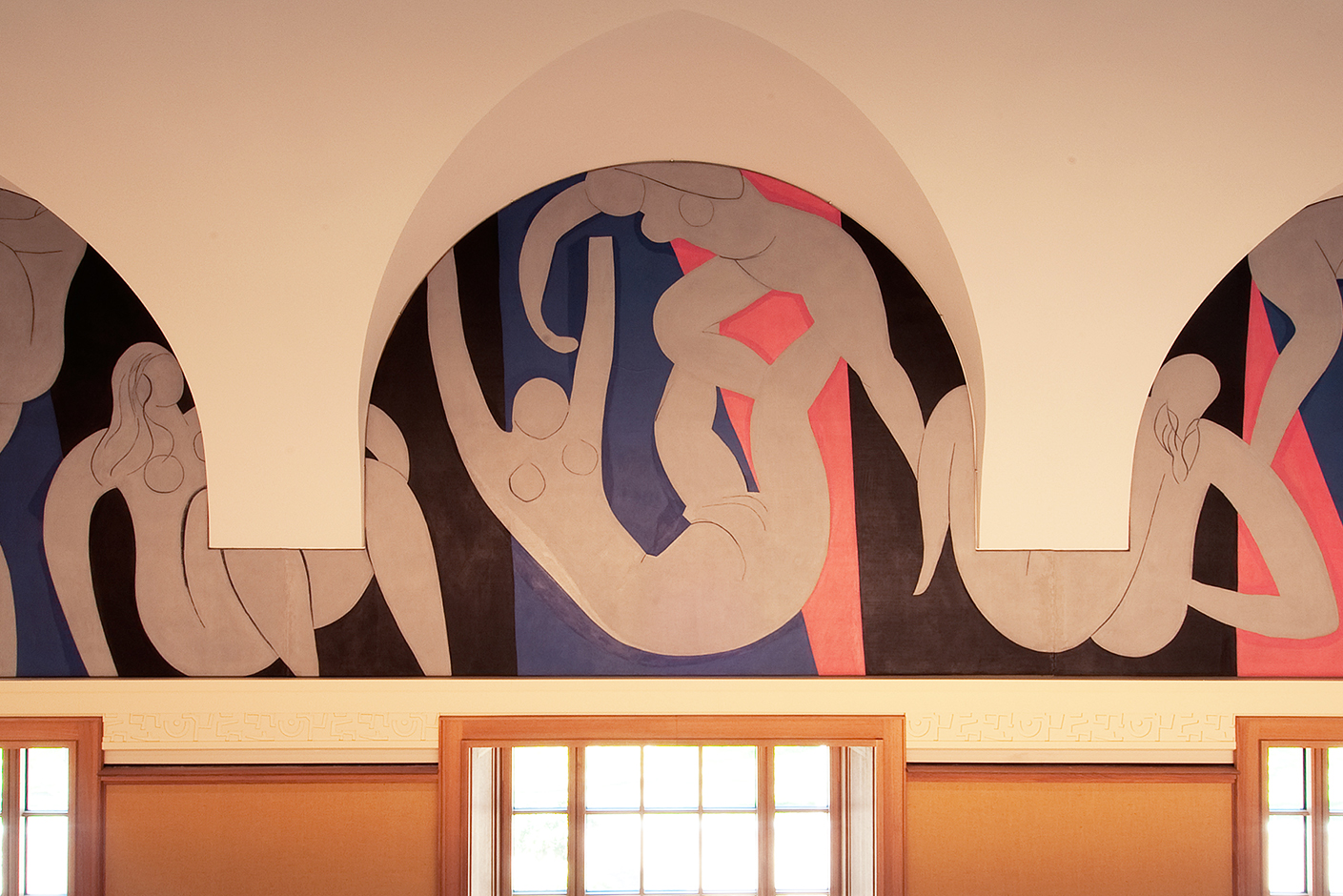
1. The Dance, by Henri Matisse: “The Dance is one of the great stories of the Barnes Foundation. Matisse visited Barnes in 1930 at the Foundation. He was on his way to Pittsburgh, to the Carnegie International. When he arrived in New York after a transatlantic voyage, he cabled Barnes and asked if he could come to the Foundation. By that time Barnes owned 25 of his works, and many of them Matisse hadn’t seen in a very long time. It’s thought that at that time, Barnes offered to Matisse the commission of the mural, because those spaces were empty in Merion. Matisse wasn’t initially sure that he wanted this commission, because he hadn’t really worked at that scale before. He also had another commission to do for an illustrated book.”
“But he agreed. He knew it would be good for his career. He went back to France, and then he returned again in December of 1930 to make a contract with Barnes and to study the condition. Then he went back to France with paper templates so that he would get the scale correct. So he goes back to Nice, which is where he was then living. He rents a garage, which was the only place large enough to paint these, and he starts working on one composition. He decides he doesn’t like that composition, so he puts those canvases aside. He then starts working on a second composition. He realizes two years into the project that he has the wrong dimensions. He has to start over again, so what we have here is the third set of canvases.”
“When he was working, because the scale was so large, it was very hard for him to make changes easily. He was an easel painter. He began using painted paper cutouts and pinning them in place. When he finally had his composition, he painted the canvas. So when we de-installed these panels in Merion, you could see all of the pinholes with the light coming through. That’s really quite amazing.”
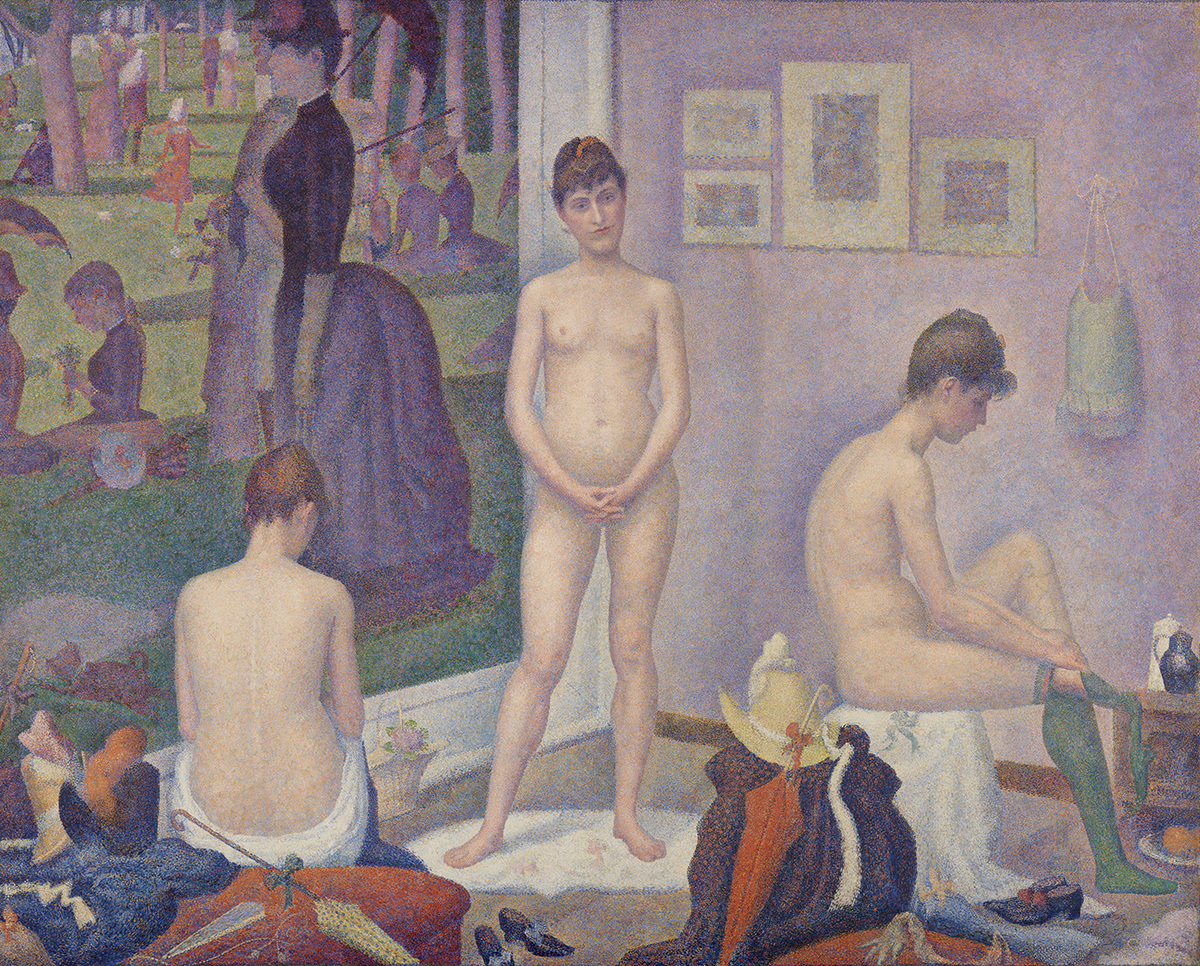
2. Models (Poseuses), by Georges Seurat: “This is a great story, too. Seurat painted this between 1886 and 1888, and it’s a response to the criticisms that he received in 1886 when he displayed La Grande Jatte publicly. When the critics wrote about La Grande Jatte, they wondered whether Seurat’s pointillism was going to be up to the challenge of painting the great subjects of the history of art — including the nude. He takes up the challenge, and this is what he called a “battle canvas.” It was a manifesto. It was a response.”
“So not only does he paint the nude once, he paints the nude three times, from three different points of view. He’s showing you his own virtuosity in the fact that the style is appropriate to that subject matter. He layers onto it a great deal of the history of art, because the three women together are kind of the modern three graces. The woman on the left has her back turned to us is possibly a reference to a painting in the Louvre by Ingres, who was a 19th-century painter. The work was called The Valpinçon Bather. And then the woman on the right — where the woman is putting the stocking on — that might have been a reference to the Spinario, which was a well-known sculpture. Then, of course, he inserts his own painting in there, so he’s very specifically making reference to that discourse in 1886.”
“The other thing about this is that this is what would have been called a genre scene, meaning that it was a kind of subject in daily life. Genre scenes were shown in the official Salon — that’s where painters showed their works. It wasn’t the highest of genres. The history of painting was. Narrative painting. So this is a genre scene that assumes the monumental proportions of the noblest kind of painting.”
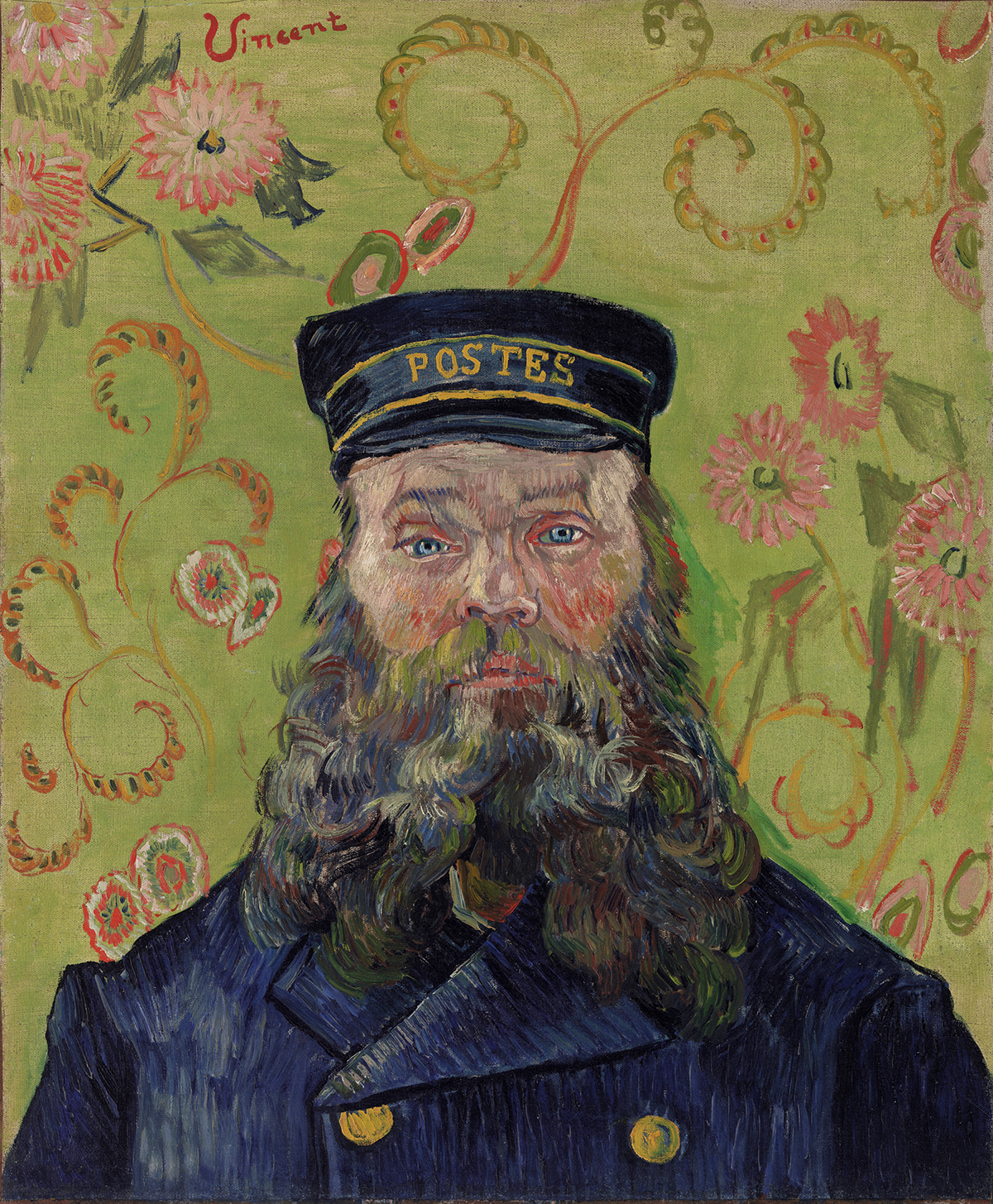
3. The Postman, by Vincent Van Gogh. “This is one of the paintings that Glackens sent back to Barnes in 1912, and that’s one of the reasons I love it. It’s really foundational to the collection. It’s one of the first things that he was looking at and considering and embracing. Van Gogh painted the Postman numerous times. Portraiture was traditionally a genre that was reserved for well-to-do people, but this guy — Joseph Étienne Roulin — was a postman. He was an official, and that’s very clearly stated in his hat. He has a very direct look. It’s just incredible the ways in which Van Gogh has painted the curls of the hair in his beard. There are many, many colors. And actually you see those curling vegetal decorations in the background echoed in the curls of his beard as well. He portrays him in a very sympathetic, empathetic way.”
“The postman was very good to Van Gogh. They were friends when Van Gogh lived in Arles in the south of France. Van Gogh was not the easiest person to get along with, and Roulin was a good friend to him and visited him when he became ill in the hospital. There are portraits of the whole family, so there’s Joseph Étienne Roulin, then his wife. There are portraits of her called La Berceuse where she’s holding the rope to rock the cradle, and then there’s one of the child as well. It was an important series of his work.”
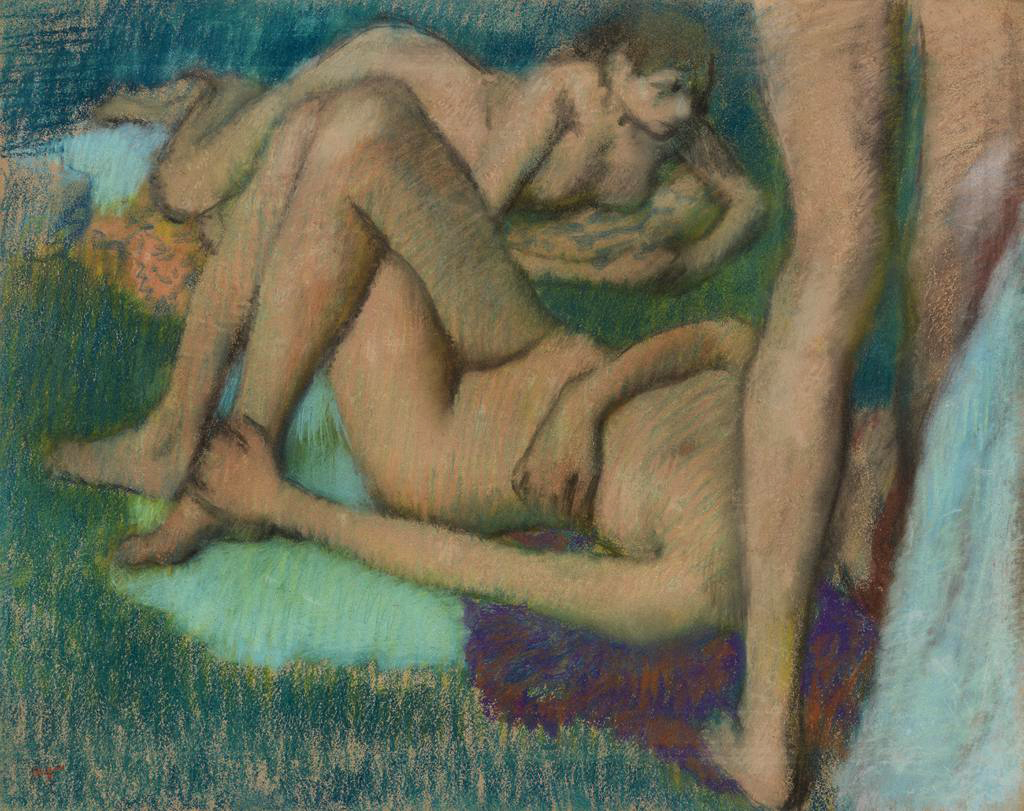
4. Bathers, by Edgar Degas: “This is a pastel by Degas. There aren’t that many works by Degas in the collection. There are some drawings, but there’s only one painting. This is a bather’s scene. Bathers were long-standing subjects. It was a very traditional subject, but this is a kind of mysterious one. I feel like it’s almost a little bit claustrophobic. They’re outdoors, but it seems airless. Then you have these legs here, just this fragment. It’s funny, because this used to be titled that it was a study. As though these were sort of unrelated figures. But I don’t think so. I think it’s a composition, and this cropping is intentional.”

5. The Studio Boat, by Claude Monet: “This is one of the great favorites for people; I think for a while, it was the number one postcard here. This is Monet painting himself in his studio boat. He had learned the practice of painting on the water from a painter in the preceding generation. When you think about Monet and his scenes of water, you’re often in the middle of the water. You’re sort of not on one side or the other, and you’re also quite low to the water. That’s because he’s painting from the studio boat. What’s interesting about this is that he’s painting his own practice here.”
“It’s interesting because in Impressionism there’s a kind of notion that they’d go out and they’d paint in front of the motif, and they’d finish the painting very quickly. Some of them did that, but sometimes they would go back to the studio and finish. He must have painted part of it at least in the studio. The Impressionists were very much interested in Japanese prints. They were interested in the asymmetry of them and the high horizon lines. You notice that the studio is just a little bit to the left of center and that the horizon is pretty high.”
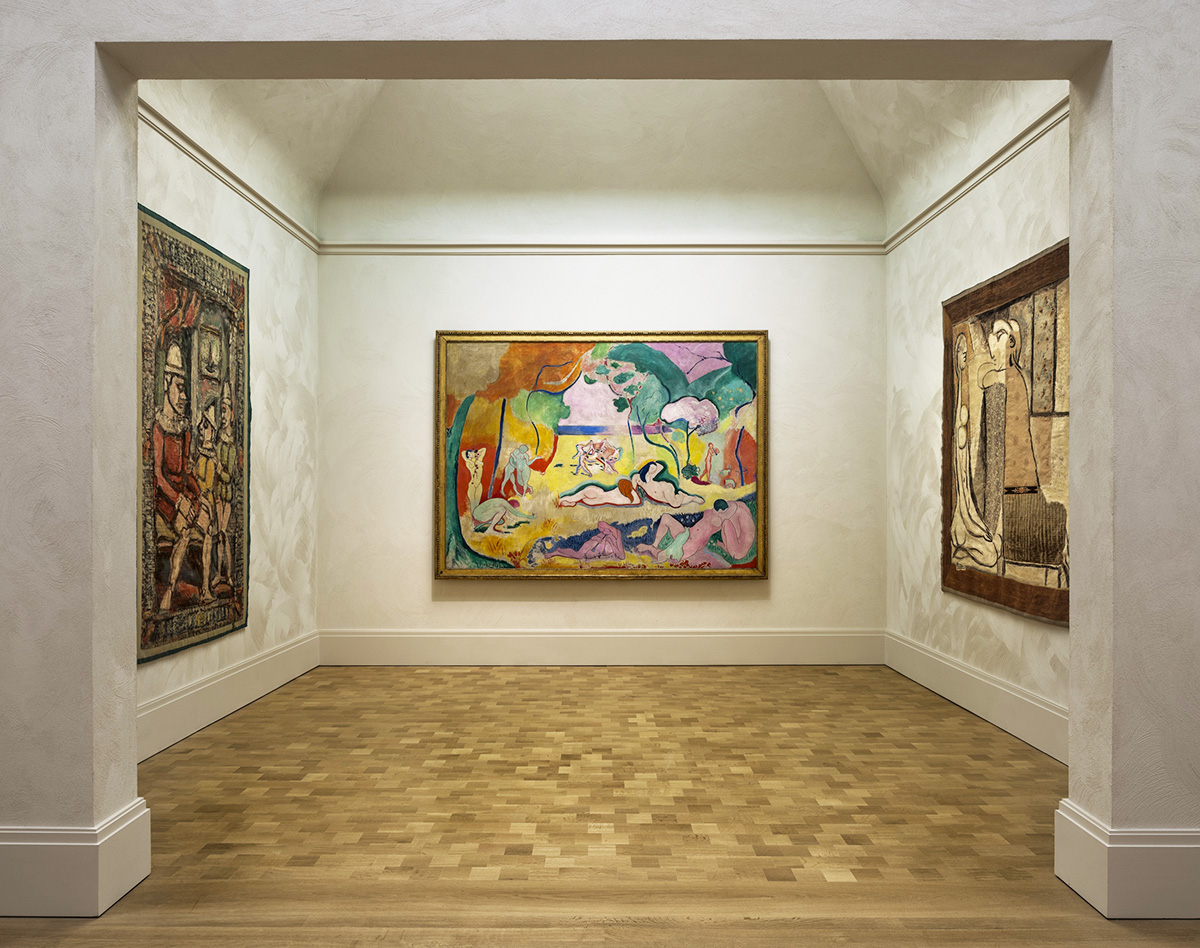
6. Le Bonheur de Vivre, by Henri Matisse: “This is one of the most important paintings in the history of art. It was in the stairwell in Merion. This is one object where we were able to change its position, because on the stairs it wasn’t accessible to visitors who, let’s say, use a wheelchair. It’s called Le Bonheur de Vivre, which means The Joy of Life, or it’s often translated that way. This is one of the paintings that Barnes owned when Matisse came in 1930. Obviously this subject of The Dance was one that was very important to him. This was painted in 1905 or 1906, and it was shown at a public exhibition. It’s a very traditional subject — the pastoral or the idyll, with the kind of heroic tree anchoring each side of the painting. Some of the bodies, it’s not clear whether they’re men or women. There’s not a very clear narrative. But what the critics responded to especially was the color. They reacted to these non-naturalistic, really bold hues of mixed color, flatly applied. This is the kind of painting that we associate with Matisse as a Fauve.”
“This is a painting that had been owned by Leo and Gertrude Stein. Barnes met them for the first time in Paris in 1912. He and Leo got along really well, and they corresponded for decades. They discussed aesthetics, psychology, all kinds of things, so the Steins had at one time owned this. Then it changed hands subsequently, but it came on the market in 1922. We have a letter in our archives where Barnes is writing to his dealer Paul Guillaume, and in the P.S. of the letter he says, “I hear this painting might be available. If you can get it for a good price, then I’d like to have it.” It’s my most favorite P.S. in history.”
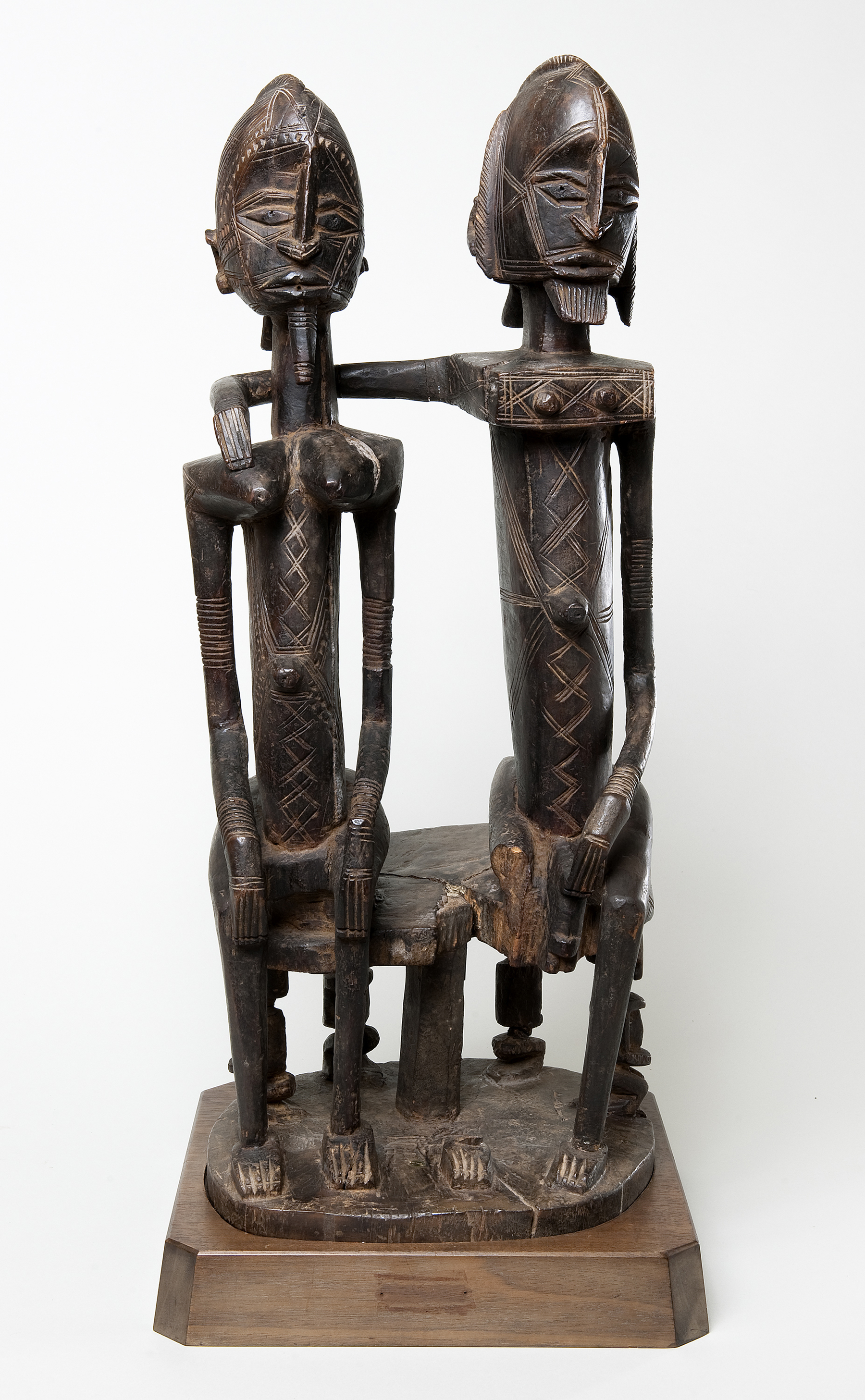
7. Seated Couple, by the Dogon Peoples: “Barnes began collecting African art in the early 1920s, again from Paul Guillaume. He was one of the first Americans to collect African art for its formal qualities and not for ethnographic reasons. He displayed it right away with Western or French and American modernism and also old master paintings too. That was really unusual. That’s part of what distinguished him as a collector of this material. Because he was working with a French dealer, a lot of this material comes from West Africa, which is where the French had colonized.”
“When Barnes was collecting this material, some people believed it was much older. Now we know it couldn’t have been. It wouldn’t have survived, because a lot of it is wood. Also because these were objects that were used. Now we see that they’re late 19th to early 20th Century, because none of them are dated.”
“This is a really important African piece. It kind of represents a partnership with the man and the woman almost roughly at the same scale with his arm around her. You can see on the back she has the baby, and he has a quiver for arrows. He was gathering the food, and she was taking care of the children. There’s another one at the Metropolitan, but they’re very rare.”
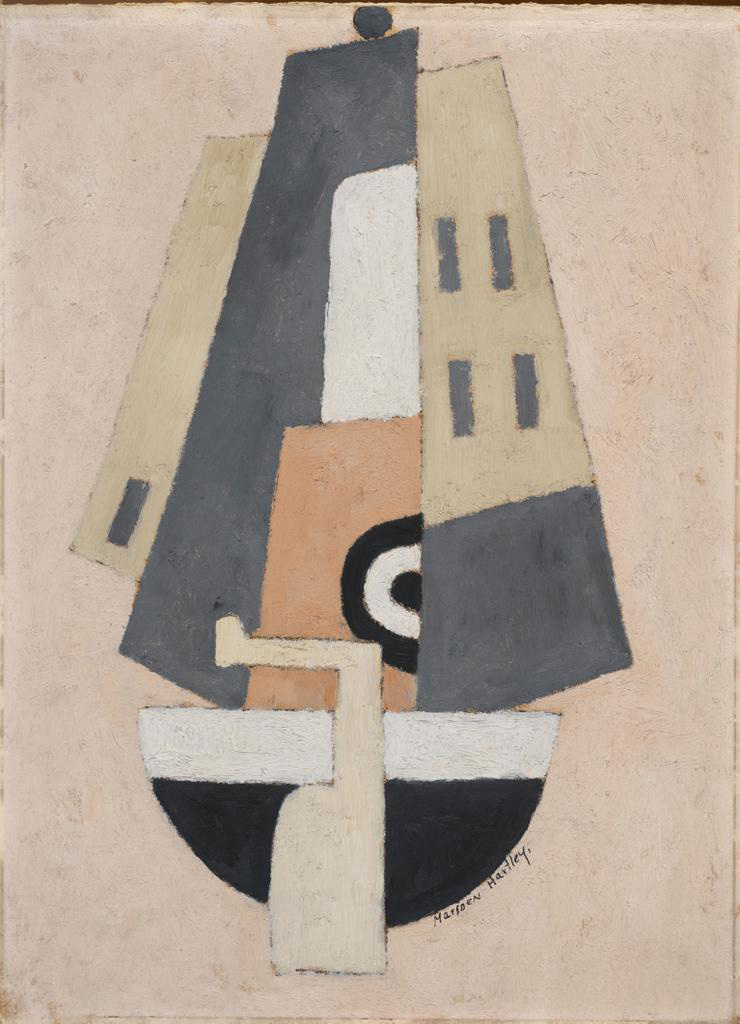
8. Movement, Bermuda, by Marsden Hartley: “These are by an American called Marsden Hartley, who worked in a Cubist vein of his own. These are boats. Initially Barnes was sort of hesitant about Cubism. He actually wrote an article called ‘Cubism: Rest in Peace.’ He declared the style academic, banal, and dead. He changed his mind, and he said that he didn’t have to believe in their theories he just had to like the picture. Over time, artists like Hartley came into the collection, so he kind of softened. That’s something interesting about Barnes. His view is that you don’t really learn through books. You learn through experience. That’s the key to his philosophy.”
This post is part of Sight Unseen’s Philly Week, sponsored by the Greater Philadelphia Tourism Marketing Corporation. Curate your own Philadelphia art and design experience at withart.visitphilly.com, and follow along @visitphilly #withartphl. All images (c) The Barnes Foundation

